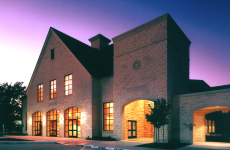Back during my glory days of junior high, I honestly believed that Britney Spears was the single most talented woman on the planet (C’mon, it was the 90s, okay?). But I was constantly challenged by my best friend at the time, who happened to be partial towards fellow pop songstress Christina Aguilera. How did I defend the honor of the original Queen B? Well, we both used the “TRL system”, which essentially meant that whoever’s music video was #1 on MTV’s popular countdown show that afternoon would hold rank in our minds as the so-called best singer in the world. What silly kids we were…
 But the thing is, countless college-bound teens today continue to obsessively use numerical rankings as a key factor when determining the next step in their education. Several of these students pass through General Academic’s Study Lounge daily, and I can recall a number of conversations amongst them where the strongest argument in favor for a school was “Hey, but [Insert University Name Here] was ranked #1 by [Random Fancy Magazine Here].”
But the thing is, countless college-bound teens today continue to obsessively use numerical rankings as a key factor when determining the next step in their education. Several of these students pass through General Academic’s Study Lounge daily, and I can recall a number of conversations amongst them where the strongest argument in favor for a school was “Hey, but [Insert University Name Here] was ranked #1 by [Random Fancy Magazine Here].”
As outlined in a recent article from The New York Times, the Obama administration is currently trying to remedy this nasty habit by working on a brand new college rating system that strays away from number rankings and instead categorizes the quality of schools as simply either high, mid, or low-performing. To get to those ratings in the first place, the Department of Education plans to examine three primary components: access (the racial and socioeconomic diversity of the incoming class), affordability (the amount of financial aid allotted to students), and outcomes (the graduation rate of students and the number of them who can get jobs afterward).
However, educators across the country criticize the system’s lack of focus on academia, stating that the true measure of a college’s worth should stem from the programs and specialized curricula offered at the campus. Additionally, these opponents claim that the new rating system’s dependence on pure statistics creates a path for quick manipulation. A predominantly White school? Hey, let’s admit some more token minority students. The cost of attendance too high? Quick, hand out some more money to some folks who actually don’t need it. And outcomes? Sure, maybe your graduate got a job, but is it the career they imagined?
While these are all valid criticisms, the intent here is undoubtedly good. The cost of higher education is becoming devastatingly high in America, and it’s a travesty whenever an individual can’t go to college because of reasons beyond their control – race, money, or otherwise. President Obama’s initiative deserves praise for attempting to help prospective students find schools that not only want them, but also want them to do well.
 But in the end, statistics – whether from the new system or existing ranking schemes – fundamentally cannot be relied upon for something that is ultimately so subjective. Yes, we live in a world of moneyball, Instagram likes, Vine views, Facebook followers, and so forth, but numbers can and do lie. There are certain intangibles that every school has that cannot be measured, which is why the college visit is so imperative.
But in the end, statistics – whether from the new system or existing ranking schemes – fundamentally cannot be relied upon for something that is ultimately so subjective. Yes, we live in a world of moneyball, Instagram likes, Vine views, Facebook followers, and so forth, but numbers can and do lie. There are certain intangibles that every school has that cannot be measured, which is why the college visit is so imperative.
So while you can certainly use stats, brochures, pamphlets, and so forth to get a general feel for your dream school(s), if you do have the opportunity to actually step foot onto said campus, do it. Tour the grounds, talk to students, sit in on a class… See for yourself what’s there to be offered because although numbers do lie, love at first sight does happen.
Want to learn more about how to make the most of a college visit? We’ll be focusing on that in our feature for Saturday, so stay tuned!















